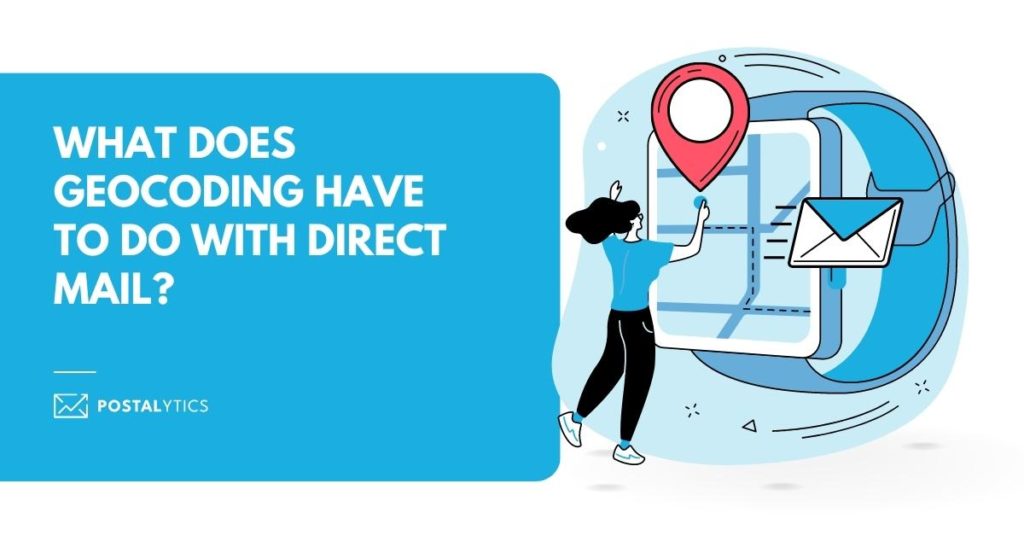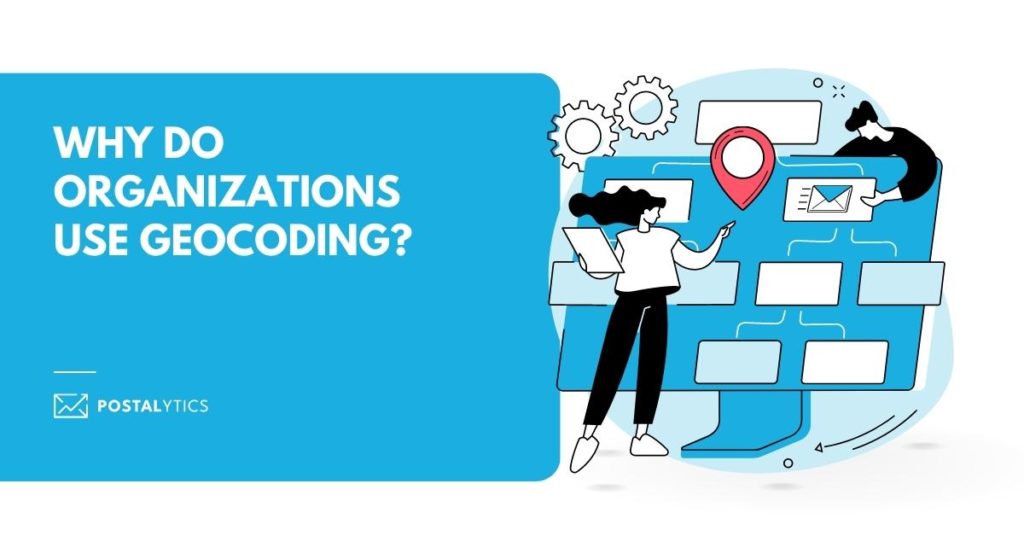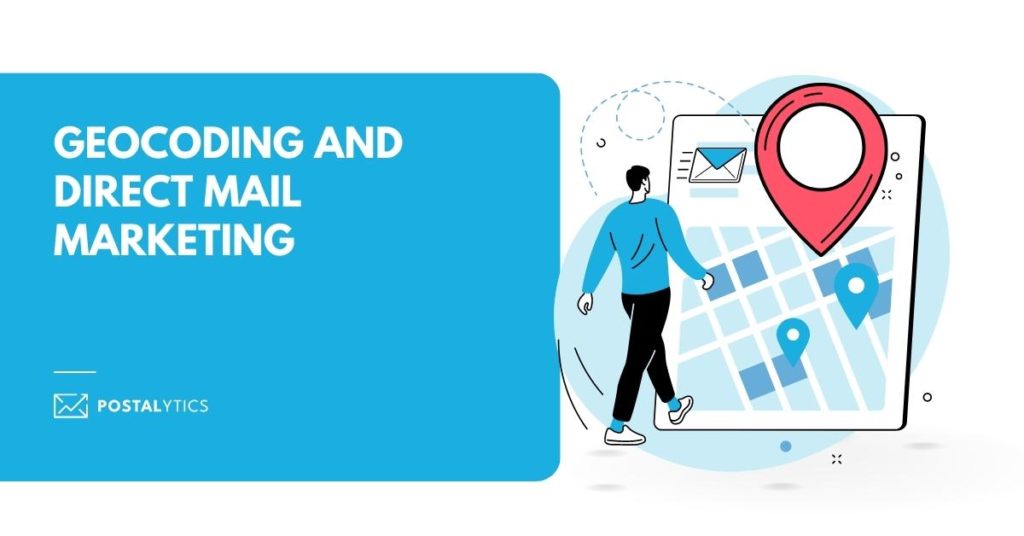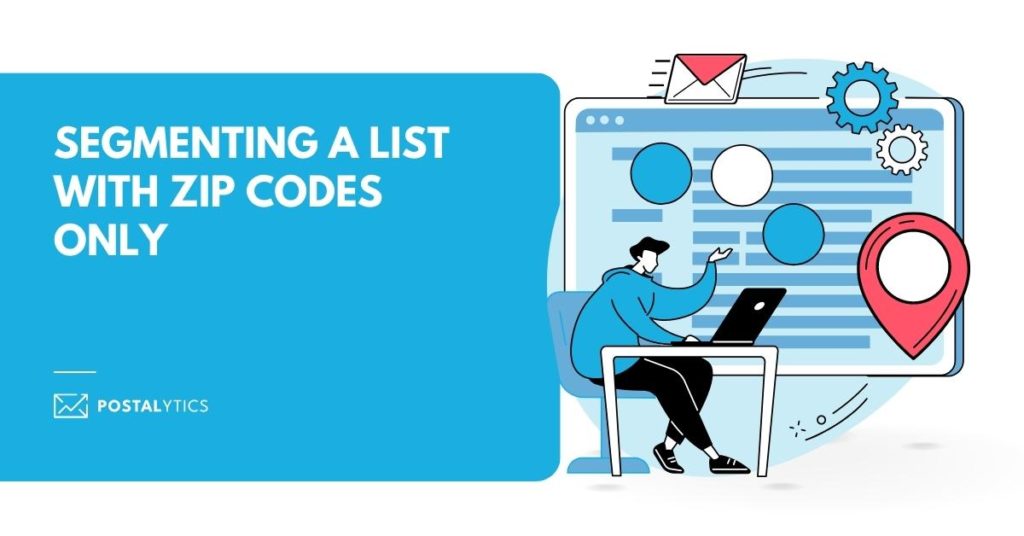
Are you looking to improve the response rates and ROI of your direct mail marketing campaigns?
We might just have something to help you maintain your edge. As the leading direct mail automation platform, we spend a lot of time testing and analyzing marketing technologies. And here’s something you need to know if you want your marketing to stand out. That something is geocoding.
Geocoding is a process where the exact location of a postal address is expressed as latitude and longitude coordinates. The ability to pinpoint a place is one characteristic that makes direct mail so powerful and targeted. Marketers use the data to get the right offer to the best mailbox and improve the odds of a response.
Today we will explore how geocoding a mailing file allows marketers to modify offers based on distance from a physical location. Examples include directing customers to the nearest retail store or eliminating addresses outside the primary trading area or voting district.
What We’ll Cover
What are Geocodes?
In its simplest form, a geocode is a set of latitude and longitude coordinates representing a specific geographic location, such as a landmark, street address, or place name. Geocodes are unique identifiers for place names anywhere in the world. Uses include navigation, routing, insurance risk analytics, marketing, and more.
What is Geocoding?
A standardized and correct postal address not only qualifies an organization for direct mail postage discounts, but it is also the first step in geocoding. Geocoding connects a postal address to a physical point. Adding this information to a database enables marketers to target an identified audience.
Geocoding provides better information than address standardization and correction alone. For example, the Postal Service considers a high school baseball field a valid address. This address data is helpful for emergencies and for directing visitors to a game. However, its marketing value is limited.
Geocoding identifies addresses where people live. These are the potential buyers.

Why do Organizations Use Geocoding?
Geocoding software is used in a variety of industries, including
- Healthcare: Geocodes provide data for research groups to study the epidemiological patterns of disease.
- Public Safety: Emergency responders use geocodes via locally developed street files and E911 points. In rural areas, mailboxes are often clustered and may not reflect an actual location.
- Commercial: Geocodes help monitor shipping patterns and track customer sales.
- Insurance: Insurance companies rely on geocoding to set premiums and make underwriting decisions based on the physical location of the insured property. Health insurers create dynamic provider directories based on travel distances from patients’ homes.
- Military: The armed forces use the Military Grid Reference System. It is the geocoordinate standard used by NATO militaries for locating points on Earth.

Geocoding and Direct Mail Marketing
We have identified geocodes as universally beneficial for several commercial and public safety applications. However, our focus is using them to improve the odds of reaching a responsive recipient to a targeted direct mail offer.
Geocoding enriches mailing list information by turning postal addresses into coordinates to build marketing clusters based on relevant data points. There may be a strong marketing cluster in the northwest corner of a ZIP Code, for example, while the rest of the area offers little chance of success for a direct mail campaign. Instead of “pulling” entire ZIP Codes from your master list, pull the addresses you want based on latitude/longitude coordinates.
Geocode data also enables users to compute the distance between two points. This is especially valuable to organizations with multiple stores or branches. Without geocoding, it would be impossible to determine which location is closest to an individual home address. A marketer might also decide to offer greater discounts to customers further away from a store to encourage them to make the trip. City names or ZIP codes aren’t always the best way to segment your mailing list.
Here’s a great article that tells you everything you need to know about mailing lists: “The Ultimate Guide: How to Choose and Test Your Direct Mail List.”.

Segmenting a List with ZIP Codes Only
Geospatial data costs money. You need good quality data for a successful direct mail campaign. Professional-grade geocoding applications are designed for direct mail problem-solving, not just dropping coordinates into a database.
Since the ZIP codes in your prospect database also describe a geographic area, you may wonder why you can’t simply use your address data instead of investing in a geocoding application. A ZIP Code map is essentially a collection of oddly shaped blocks superimposed over a typical city or state map. ZIPs are designed for delivery purposes, not demographic classifications. ZIP Codes are not the way people work, travel, or live. Consumers living at the north edge of a ZIP Code shop at different stores and use other services than consumers in the south. One “chunk” of a ZIP Code is single-family homes, while another is primarily apartments. These two demographic groups buy differently.
ZIP Codes are not stable. The USPS modifies them as population patterns change. For example, a new Amazon warehouse might have a unique ZIP Code. A subdivision development built on former farmland might cause a ZIP Code to split. A location’s latitude and longitude will never change, making geocodes a more reliable and precise way to target your best prospects and drop unlikely buyers.

Targeted Direct Mail Marketing
Businesspeople receive over 120 emails per day. The average Gmail account contains over 8,000 messages. Consumers suffering from digital fatigue delete rather than interact with an electronic marketing message. Direct mail is tangible, permanent, and offers a visual experience. It cuts through the digital chatter. Add geocoding to your marketing strategy and make direct mail even more powerful by spending your direct mail dollars communicating with your target audience.
Postalytics provides enterprise-grade direct mail automation with workflow, integration, and analytics. Integrate Postalytics with your existing CRM, marketing automation, or eCommerce software and harness the power of automated direct mail marketing. From one to 100,000 mail pieces, the Postalytics direct mail platform makes your current digital channels more responsive.
About the Author

Dennis Kelly
Dennis Kelly is CEO and co-founder of Postalytics. Dennis joined Boingnet, the predecessor to Postalytics, in 2013. Boingnet was focused on providing print and direct mail marketing service providers the ability to add digital marketing channels to their direct mail campaigns. Postalytics is Dennis’ 6th startup. He has been involved in starting and growing early-stage technology ventures for over 30 years and has held senior management roles at a diverse set of large technology firms including Computer Associates, Palm Inc. and Achieve Healthcare Information Systems.
